1 min read
30 Doradus (MIRI Compass Image)
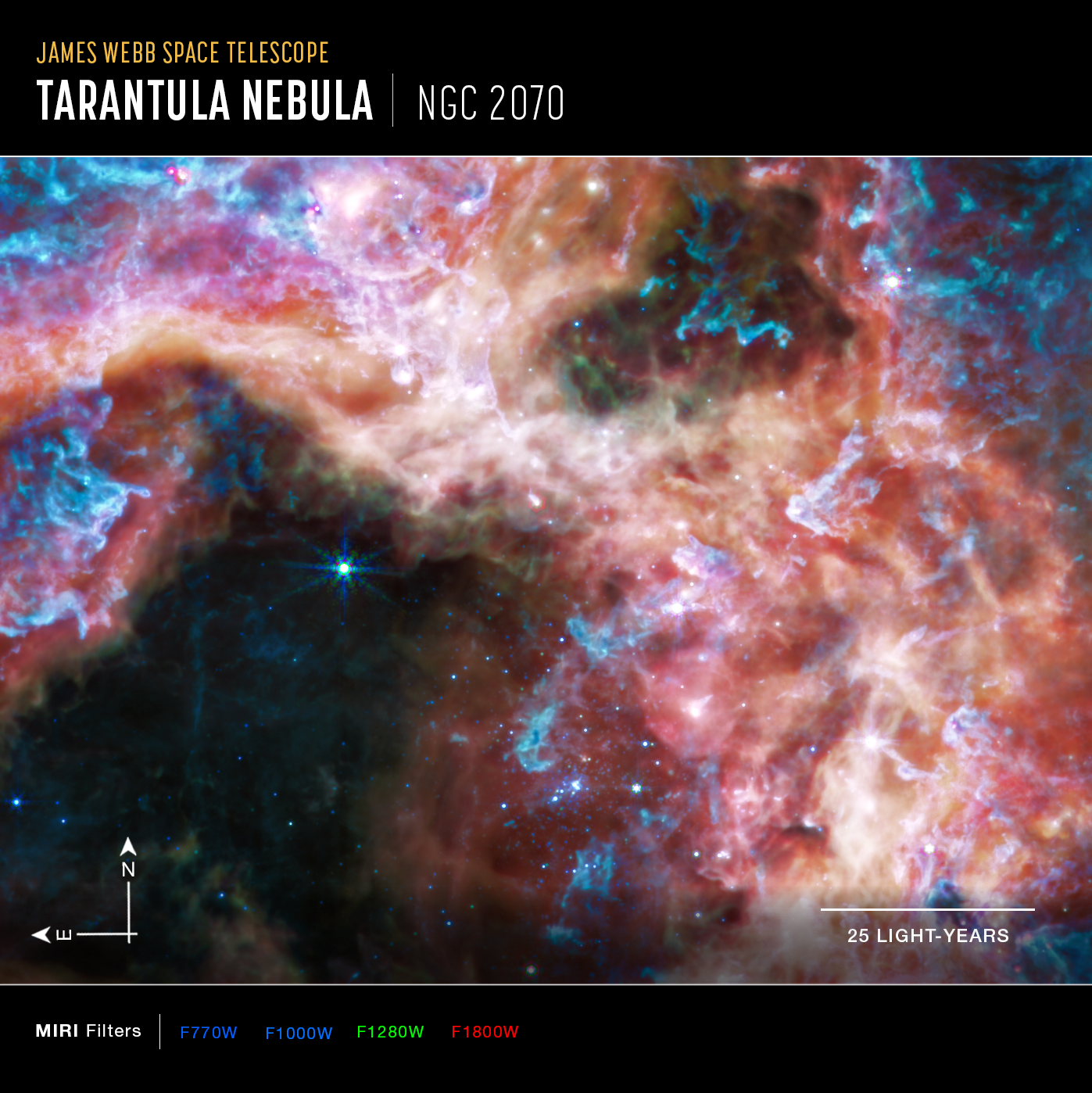
North and east compass arrows show the orientation of the Tarantula Nebula image on the sky. Note that the relationship between north and east on the sky (as seen from below) is flipped relative to direction arrows on a map of the ground (as seen from above).
The scale bar is labeled in light-years, which is the distance that light travels in one Earth-year. (It takes 25 years for light to travel a distance equal to the length of the bar.) One light-year is equal to about 5.88 trillion miles or 9.46 trillion kilometers.
This image shows mid-infrared wavelengths of light that have been translated into visible-light colors. The color key shows which MIRI filters were used when collecting the light. The color of each filter name is the visible light color used to represent the infrared light that passes through that filter.
About the Object
- R.A. PositionR.A. PositionRight ascension – analogous to longitude – is one component of an object's position.05:38:42.4
- Dec. PositionDec. PositionDeclination – analogous to latitude – is one component of an object's position.-69:06:03.35
- ConstellationConstellationOne of 88 recognized regions of the celestial sphere in which the object appears.Dorado
- DistanceDistanceThe physical distance from Earth to the astronomical object. Distances within our solar system are usually measured in Astronomical Units (AU). Distances between stars are usually measured in light-years. Interstellar distances can also be measured in parsecs.170,000 light-years (52,000 parsecs)
About the Data
- Data DescriptionData DescriptionProposal: A description of the observations, their scientific justification, and the links to the data available in the science archive.
Science Team: The astronomers who planned the observations and analyzed the data. "PI" refers to the Principal Investigator.This image was created from JWST data from proposal: 2729. It is part of Webb Early Release Observations. The Early Release Observations and associated materials were developed, executed, and compiled by the ERO production team: Jaclyn Barrientes, Claire Blome, Hannah Braun, Matthew Brown, Margaret Carruthers, Dan Coe, Joseph DePasquale, Nestor Espinoza, Macarena Garcia Marin, Karl Gordon, Alaina Henry, Leah Hustak, Andi James, Ann Jenkins, Anton Koekemoer, Stephanie LaMassa, David Law, Alexandra Lockwood, Amaya Moro-Martin, Susan Mullally, Alyssa Pagan, Dani Player, Klaus Pontoppidan, Charles Proffitt, Christine Pulliam, Leah Ramsay, Swara Ravindranath, Neill Reid, Massimo Robberto, Elena Sabbi, Leonardo Ubeda. The EROs were also made possible by the foundational efforts and support from the JWST instruments, STScI planning and scheduling, Data Management teams, and Office of Public Outreach.
- InstrumentInstrumentThe science instrument used to produce the data.MIRI
- Exposure DatesExposure DatesThe date(s) that the telescope made its observations and the total exposure time.10 June 2022
- FiltersFiltersThe camera filters that were used in the science observations.F770W, F1000W, F1280W, F1800W
- Object NameObject NameA name or catalog number that astronomers use to identify an astronomical object.Tarantula Nebula, 30 Doradus, 30 Dor, NGC 2070
- Object DescriptionObject DescriptionThe type of astronomical object.Emission Nebula in the Large Magellanic Cloud
- Release DateSeptember 6, 2022
- Science ReleaseA Cosmic Tarantula, Caught by NASA’s Webb
- CreditImage: NASA, ESA, CSA, STScI, Webb ERO Production Team

These images are a composite of separate exposures acquired by the James Webb Space Telescope using the MIRI instrument. Several filters were used to sample broad wavelength ranges. The color results from assigning different hues (colors) to each monochromatic (grayscale) image associated with an individual filter. In this case, the assigned colors are: Red: F1800W Green: F1280W Blue: F1000W Blue: F770W
Related Images & Videos
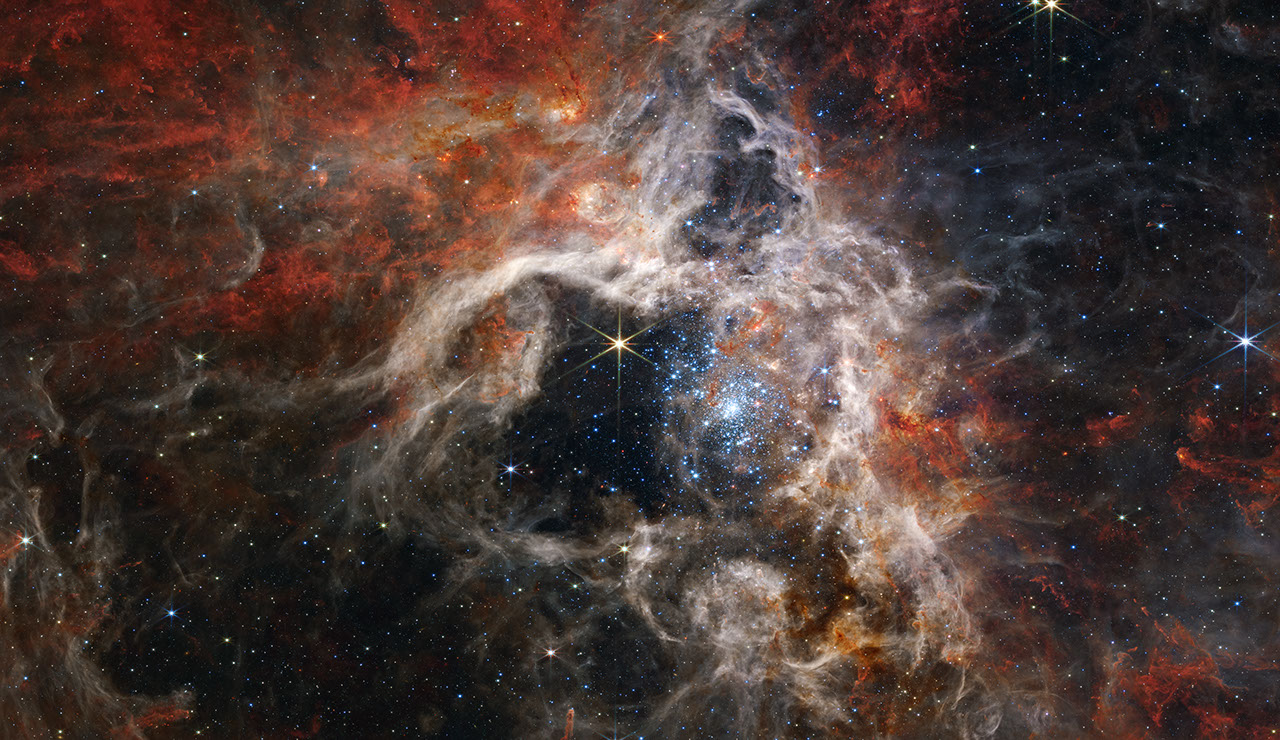
Tarantula Nebula (NIRCam Image)
In this mosaic image stretching 340 light-years across, Webb’s Near-Infrared Camera (NIRCam) displays the Tarantula Nebula star-forming region in a new light, including tens of thousands of never-before-seen young stars that were previously shrouded in cosmic dust. The most...
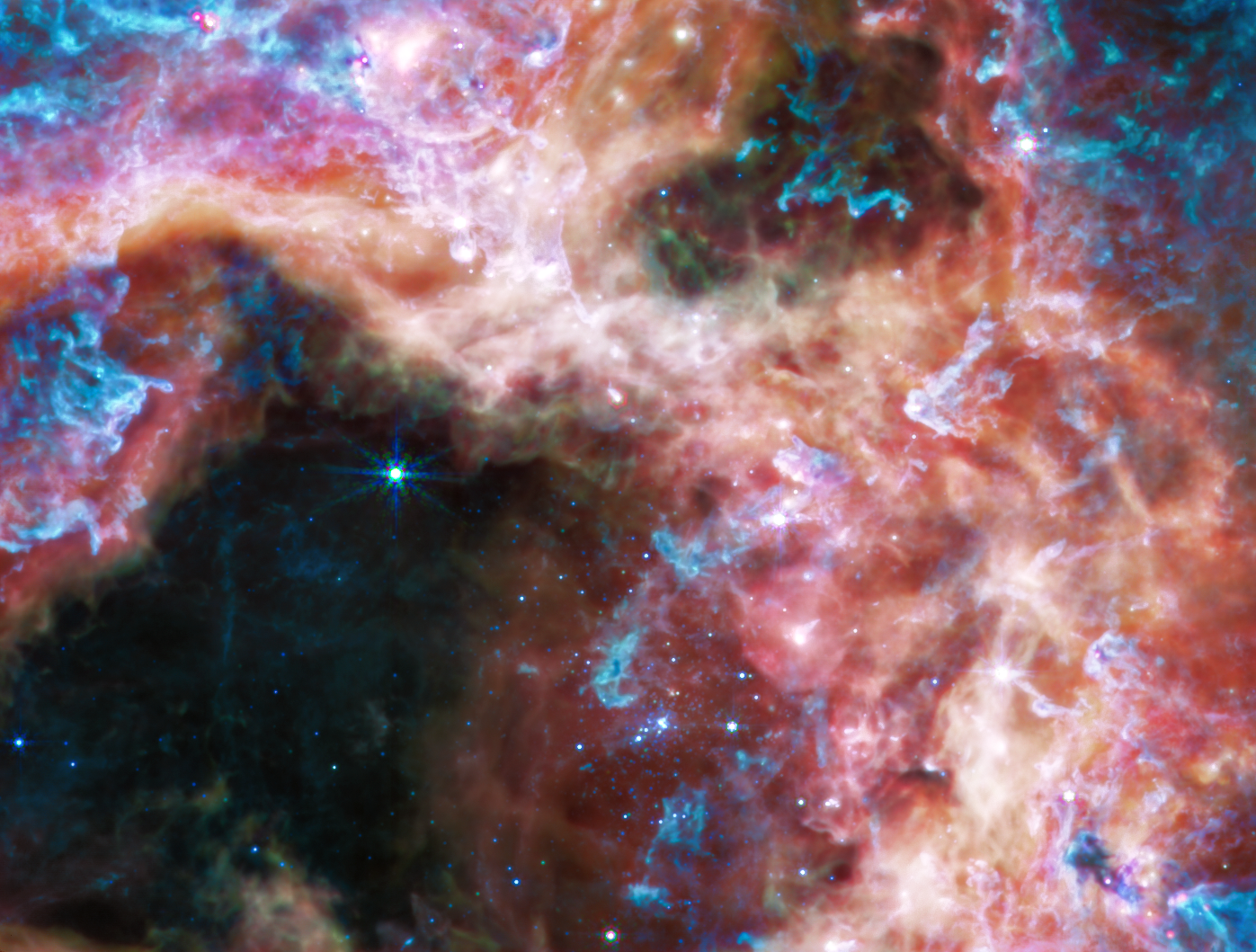
Tarantula Nebula (MIRI Image)
At the longer wavelengths of light captured by its Mid-Infrared Instrument (MIRI), Webb focuses on the area surrounding the central star cluster and unveils a very different view of the Tarantula Nebula. In this light, the young hot stars of the cluster fade in brilliance, and...
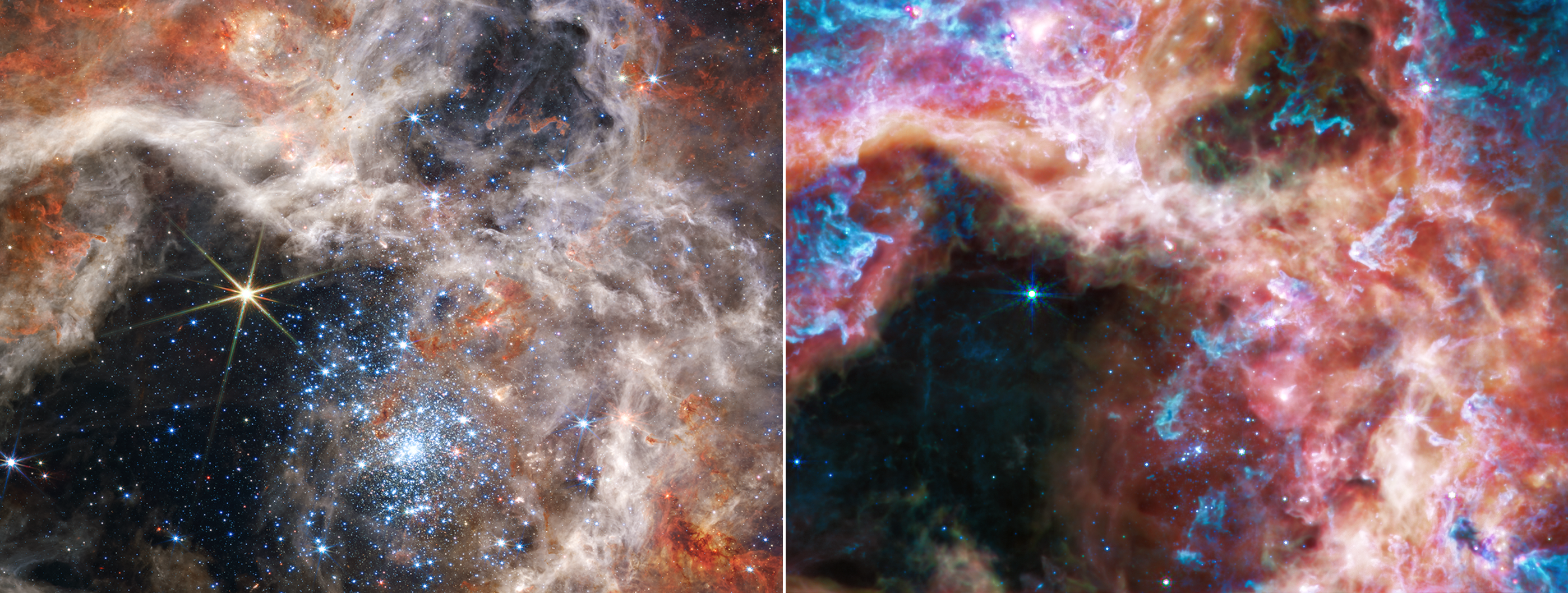
Two Views of the Tarantula Nebula (NIRCam and MIRI images)
A side-by-side display of the same region of the Tarantula Nebula brings out the distinctions between Webb’s near-infrared (closer to visible red, left) and mid-infrared (further from visible red, right) images. Each portion of the electromagnetic spectrum reveals and conceals...
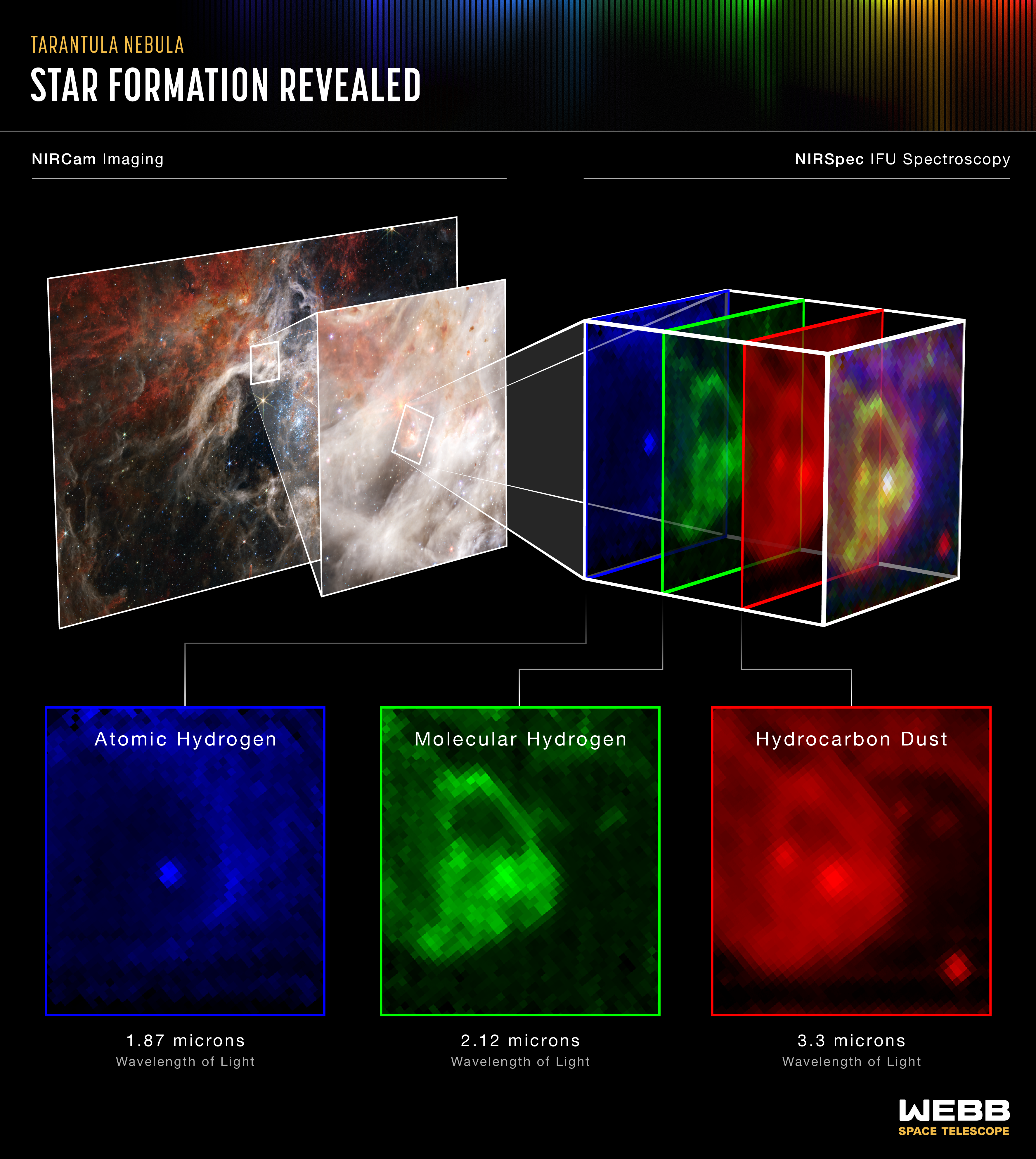
Tarantula Nebula (NIRSpec IFU)
Webb’s Near-Infrared Spectrograph (NIRSpec) reveals what is really going on in an intriguing region of the Tarantula Nebula. Astronomers focused the powerful instrument on what looked like a small bubble feature in the image from Webb’s Near-Infrared Camera (NIRCam). However,...
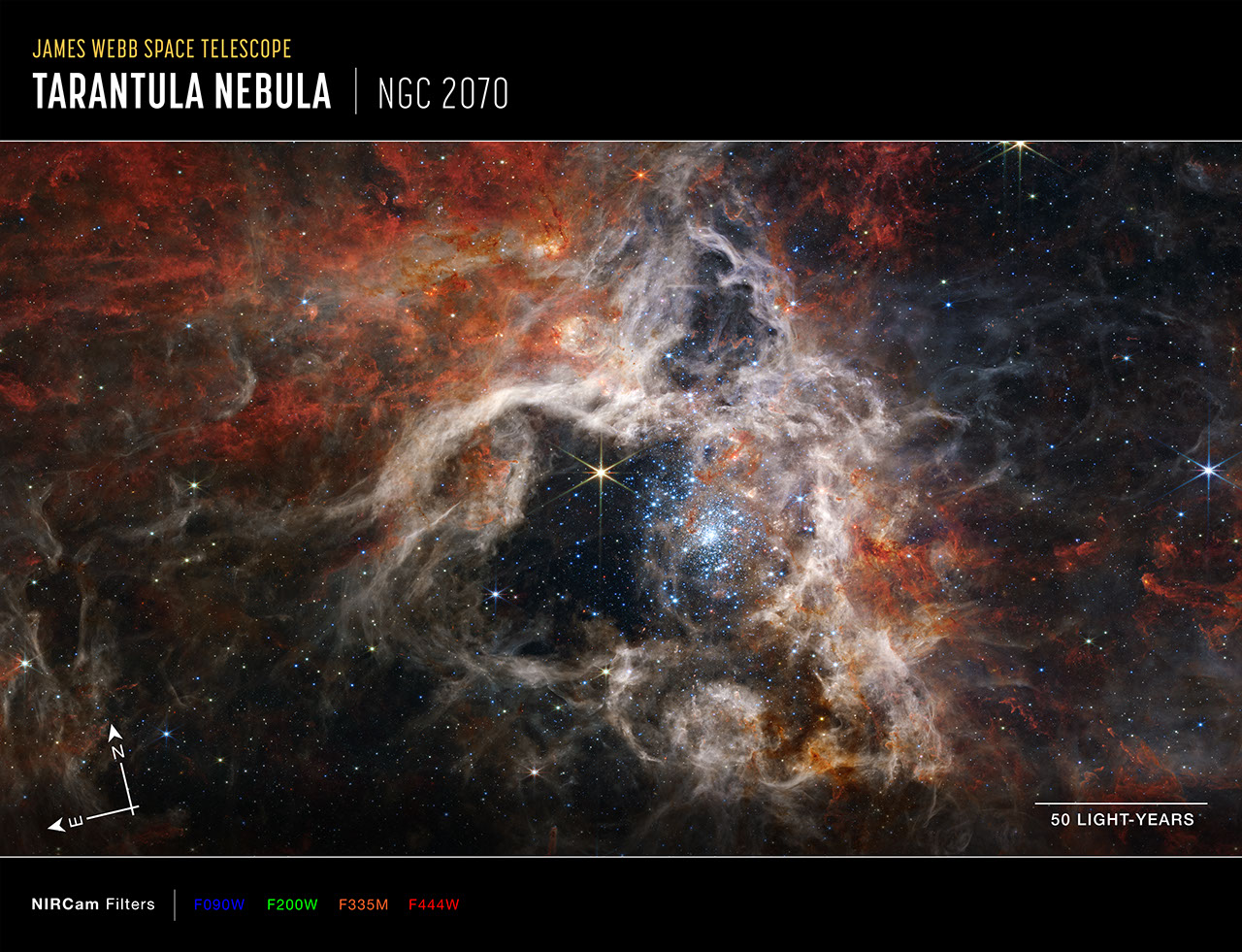
Tarantula Nebula (NIRCam Compass Image)
North and east compass arrows show the orientation of the Tarantula Nebula image on the sky. Note that the relationship between north and east on the sky (as seen from below) is flipped relative to direction arrows on a map of the ground (as seen from above). The scale bar is...
Share
Details
Laura Betz
NASA’s Goddard Space Flight Center
Greenbelt, Maryland
laura.e.betz@nasa.gov
NASA, ESA, CSA, STScI, Webb ERO Production Team






























